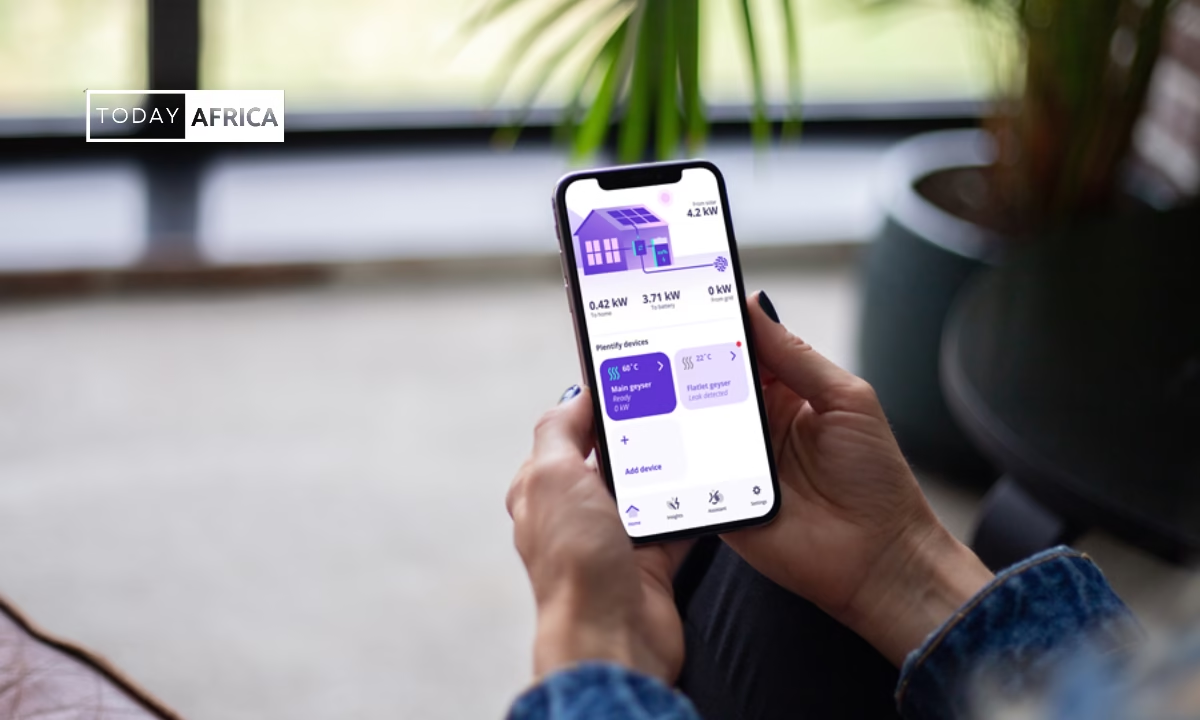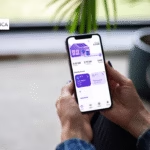Myra Samuelson is a certified and fun international teacher with over 7 years of teaching and educational management expertise. She inspires the genius in K-12 learners by leveraging technology and personalized e-learning contents.
She uses this skill set to help other teachers and educational institutions leverage educational technology(EdTech) and the online space to increase income, create fun and engaging E-content and expand their influence.
Myra Samuelson shared with Today Africa about her teaching and entrepreneurial journey.
Can you share a bit about yourself and how you became a digiteacher?
I’m Myra Samuelson, fondly called the digiteacher. So I have been a teacher all my life. I remember starting teaching while I was in primary school. I used to teach my classmates.
So that was where the passion for teaching was born. And as I grew up, I was very smart, but my parents wanted me to study medicine, like in most African families, they wanted to study medicine.
But the way God did it, I would teach others they will get very high scores in JAMB. But if I take JAMB, I will get very low scores. I’ll be like, what’s happening? So that was how I said, okay, let me do pre-science. Then through pre science, I will now get into medicine.
So I went into pre science, and I did my best. And unfortunately, they still gave me science education and that’s how I got into science education. But secretly I was happy because education is something that I’ve always loved. I love teaching others and ove helping others understand difficult concepts.
Like in school when teachers finish teaching my classmates will just come up to me and say, Onyinye please help us with this. Myra please help us with that and I’ll be glad to help them and it was like second nature to me.
So that was how I got into education officially in Nnamdi Azikiwe University. So I went through the university duration studying education and I did excellently well. I was flying. So when I graduated, I took the professional exam for teachers TRCN. So I became a qualified teacher and I started teaching officially.
What inspired you to start using technology and personalize e-learning to teach your students?
When I got into the educational system, I think I was confused. I will use the word confused. It wasn’t what I expected. So because of my love for teaching and effective learning.
I began to notice that first of all, the strategies we use in the classroom, especially in Africa, are not very effective. And we have the problem of overcrowded classrooms. You see a classroom of 50 students and one teacher.
How is that possible? And as an educator, you know that students have different learning styles. They have different levels of understanding. They have different duration it takes them to understand the concept.
So how is it feasible that one teacher standing in front of a classroom of 50 boys and girls would effectively teach all of them? It wasn’t making any sense to me. That inspired my hunger to find out more.
I was asking the right questions. How can I effectively reach every child in my class? Because I’ve taught in rural areas, I’ve taught in urban areas, so I understand the different context of what these teachers face in these different areas.
So that inspired me to start asking questions. How can I effectively reach every child in my class, whether it’s on site or online, because I also teach online. So that is when I started asking the questions and I began to look online.

I found technology. I found personalized e-learning. And I said this is it. That is how I delve into this area. So it’s just a hunger to reach every child and make sure that they get the best out of the learning experience.
Read Also: Inspiring Startup Stories of 16 African Entrepreneurs We Interviewed
What were those challenges that you have faced and how did you overcome them?
First of all, I think I’m going to be talking as an African teacher because I know my passion goes out to African teachers. So one of the first challenges I faced was like, you’re an African teacher. This technology and e-learning is for the white man, is for people in the UK, the US.
But I told myself, if a teacher in the US has the same brain as myself. God did not create teachers in the U.S. and give them a specialized brain to understand technology. Why not? If I can learn to read and write, and they can learn to read and write, then I can learn anything.
I developed this philosophy that I can actually learn anything if I put my mind to it. So that was the first challenge, and that is what most teachers have. They believe that this tech is for those teachers that are teaching highbrow areas, they feel it’s not for them.
That’s not true. So if you’re a teacher listening to this, just shatter that mindset block, shatter it, it’s wrong. It’s not correct. So that was the first thing I dealt with because I think another thing is that most teachers have this low self esteem.
In Nigeria, especially, let me use my country, they see teaching as this profession that you pass through while you’re going to the real profession. You know what I’m talking about, right?
So that self-esteem is one of the challenges most teachers have. I’m gonna start from the mind before I go into the other areas. If you’ve settled in your mind that this tech and personalized e-learning is for you, even as an African teacher, a Nigerian teacher, a teacher in the rural areas, you’re already on the path to get into where you’re going.
That was the first thing I settled in my mind. I told myself, there is no tech that I cannot learn and that has opened up my mind. It has made me open-minded to see things and to learn things as fast as possible.
That was the first challenge I had. So when I went into it and I began to see that, it’s not as easy as I used to think it is. But I had to spend hours. Sincerely, I learned, I gave it time, I started, I tried, I failed, I tried again.
And in Nigeria, because we have other challenges like light, electricity is not very stable, I had to find alternative measures to light. Yes, I had to. I got the generator, I got the inverter. I got the solar system.
You can start at whatever level you are. I didn’t get it all at once. So I started with the small money I had, but you had to invest. So that is another challenge I faced. Then I also faced the challenge of the internet. That’s another challenge I faced and I had to also get alternative internet sources.
So these are the challenges I faced. And another challenge I faced as a digital teacher, a teacher using tech, is that most students in Africa are not used to tech. In most schools, the children are not exposed to tech at a very young age. So it’s a new technology to them.
It’s a new thing. So you have to be patient as a teacher if you want to introduce tech to your students. Because some of them might not like it, some of them might not know how to use it. So I had to be patient and I had to explain to their parents.
I also had to work with the school authorities. I had to work with their parents to understand that this is the future of education. So these are the different challenges I faced, but I had to tell them that if we don’t get the students to use these tools, then we’re going to be doing them a disservice as leaders of tomorrow.
How do you help teachers and educational institutions increase their income?
I remember in 2023, UNESCO released data that half of the countries in the world that pay teachers the rightful salary they should earn. Only half of the countries in the world, UNESCO, released that data. And it shocked me.
Most teachers are underpaid and overworked. Let me share a quick story with you. One of the reasons why I decided to help teachers increase their financial income using tech, online space, and AI.
When I started my teaching journey, I moved very quickly. I moved from classroom to head of stream and I moved to managing a school. I think in the space of five years actually.I moved very fast because I loved what I was doing.

So I was putting everything in it and people could see the passion and expertise that I had. So in the school I was managing, the school owner was not very fair to teachers. I think it’s everywhere and I experienced it firsthand.
One of the days she came around to the school. I love looking professional. And she now saw me wearing a heel, like a shoe with a heel because I wanted to look good. People have this notion that teachers are local and broke. I hate it. It’s not true.
So I was encouraging my teachers to dress well because you’ll be addressed the way you dress. If you dress well, at least when the parents see you, they know you’re not begging them for their money. You’re rendering a service, a value to their children.
The way they go and respect a doctor that takes care of their child’s health. They should respect you because you take care of the child’s mental, behavioral, and cognitive aspects. A lot of things go into forming and shaping a child in the classroom.
So we should be accorded that same respect from parents. So as I was like, okay, I’m doing a good job, the owner came and said, why are you dressing like this? She was shouting, I was confused. Do you know that she took my heels and threw them over the fence?
I was like, what will I do? There’s nothing you can do. So I was like, what is happening here? So that was me directly experiencing this. And because I knew there is nothing else I can do, I don’t have any other source of income. You get it? If I lose my job, I’m gonna still go and find another school.
And that school I was in is one of the high paying schools in the city. So I had no choice. I literally had no choice. At that time, I didn’t know I had the choice. That was an incident.
Then coming to the teachers, there was a day we were having meetings. And we had meetings even on Saturdays. Teachers don’t have time for themselves. If you don’t come, you’ll be sacked.
And they’ll get another teacher, another secondary school leaver. So you don’t have any leverage. So on that Saturday, we came to her house. And she came out and was like, okay everybody, welcome. She brought out a seat for me to sit on and the teachers were like standing.
And she told them to sit on the floor. Do you have this kind of house in your father’s house? I was sitting because I was the school head. I was the school manager. So at least she gave me that respect. I sat, but where I was sitting, I was shivering and I was shaking. I was mad and I was like, what kind of humiliation is this?
Because she knows the teachers don’t have alternatives. There’s nothing they can do. They don’t have another stream of income so they sat on the floor. They did. We had the meeting and we left. So I’ve had experiences like that.
I’ve heard her tell a student to flog a teacher in front of her class. I don’t know how the teacher will continue to teach. That teacher had to quit because she just wrote a letter to me, ma’am, and I don’t think I’m gonna continue.
And I told her, me, I don’t even know how you’ll continue teaching a class that you were humiliated before them. So this is what made me, I was feeling angry at teachers being stuck in a system that they have no alternative to.
I had to quit. My husband really told me it’s time to go. I love teaching. So leaving is very difficult for me. I am attached to the teachers, the students and all that. But he told me that it’s time to leave.
So when we moved locations and I came into a new location, I told myself, I don’t want to continue like this. And I began to ask questions. It’s important that you always question your status quo as a person.
If you keep doing the same things and expect the same result, then are you a mad person? So I began to ask questions. What can I do differently to get a different result? And that is when I went into searching, researching, asking questions and I got into online teaching and boom, that was the answer to my question.
So I got into that and I said, wow, so I can actually do this to get an extra stream of income. And that’s what I did. So after doing it for years, I just saw teachers coming up to me with the same complaints and I told them, you know, actually there is another way you can increase your income.
Because if you have another stream of income, you can actually argue your case. You can actually say I don’t like what you’re doing to me. Because you know you have a backup plan but if you don’t have any, you just swallow every nonsense anybody throws at you.
So that was how I got into empowering educators to look out of the traditional classroom to increase their income. The truth is that as I’m sitting here, we have about 15 ways teachers can make money apart from traditional classrooms.
I’m all for it. Online teaching is just one. Because my goal is to empower educators, sincerely to empower educators to be financially free so that they will know their worth, so that they can live a fulfilled life, so that they can be happy doing their job.
Because if you’re putting in all the hours of work and you’re paid peanuts, you’re not happy. And if you’re not happy doing your work, your creative juices can’t be flowing right. I know how much better I’ve gotten as a teacher because I earn better, truth be told.
So that was how I got into empowering teachers to be financially free. And they come to me, I train them. I wrote an ebook because I know most of them don’t have the money to pay. So I actually wrote that ebook as a way to give back to the teaching community.
So even if you don’t have money to pay for my one-on-one training or my close-up training, if you get that ebook, it will expose you to the possibilities of gaining financial freedom. That is one way I help teachers gain financial freedom.
Now coming to educational institutions. So how I help them increase their income is that I work with tech companies that provide e-learning services. Because I’m very good with tech and online, if you’re not very good with tech, you’re going to mess up online classes and you’re not going to have students come back.
But if you know how to use the tech tools, the gamification tools, the collaboration tools, you’re on fire and your students are loving it. And the learning experience is effective. They are learning. They’re having fun. More customers will be coming.
So what I do is that I train their teachers. I offer them online teaching strategies becaus onsite teaching strategy is not the same thing. The way you teach offline is not the same way you teach online. So I offer them off online teaching strategies. I offer them tech tools that are appropriate to each age group.
So the tech tools are used for adults. It’s not the tech tools you should use for children. It’s not gonna work. Then I also teach them how to position themselves online. Because when I talk about tech, I’m talking about the online space. I’m talking about the tools, okay?
So I teach them how to position themselves online to be seen by the right clients that need their services. So these are some of the ways I empower them financially.
Read Also: Age is Just a Number: How Rejection Sparked Milicent Ukachi’s Drive to Succeed
You made mention of the various ways that teachers earn money. Can you please list some of them?
First, as a teacher, you have a lot of transferable skills. As a classroom teacher, you’re tasked with speaking. You are actually a public speaker as a teacher because you speak to children, adults, students every day.

So you have public speaking skills and you can make money with your public speaking skills through training, you can be a trainer as a teacher. You can make money as a trainer, as a coach.
So you can train others on whether you want to train them on early childhood education, or whether you want to train them on how to use tech. You can train other educators on the skills that you have. So training and coaching is one way you can make money as an educator.
Another way you can make money as an educator is through books or ebooks. Some educators have a lot of experience that if they put it into an ebook, other younger educators will be willing to buy it.
So if you can just sit down as an educator and say, what do I have to offer? What value can I offer? How can I impact the next generation? You pour that into an ebook and you sell it and you’re good to go.
So another way you can make money as an educator is you can work with brands. There are brands that are looking for educators to test their tools, whether it’s their tech tools or to test their products.
Most educators do this for free. They call all these tech people to test out a product and they’ll pay them. But when they call an educator they will do it for free. It’s wrong. Working with brands is another way to make money as an educator. I’ll share more as we continue.
What are some of the key challenges that teachers face when trying to achieve financial stability and how do your methods help them in addressing these challenges?
One of the main challenges I see them face is time constraints because teaching is a very demanding job. Most times as teachers we leave our houses at 6.30 a.m. because we need to be in school by 7.30 a.m. to welcome the parents and the students.
And then you work all the way, sometimes you work all the way through 4 p.m. And when school dismisses, you’re not done as a teacher. So you still have to stay back to write your lesson plans, your lesson notes, grade the students’ works, and prepare for the next class.
I remember walking home by 7.30 PM as a young girl. It’s not funny, sincerely. Teaching is really draining. One of the challenges I see is that I don’t have the time to even commit to learning, whether it’s tech, whether it’s how to teach online, whether it’s how to apply to jobs that they need to.
So one of the methods I use to help them is that I make my training self-paced. I encourage them to steal out time, no matter how little, because it’s not like a life class where if you miss it, you’ve missed it. My training is self-paced, but I have life coaching calls on weekends.
So throughout the week, they can steal 30 minutes to one hour to watch the training, take something out of it. Then we come on weekends and we answer questions because it’s important to have life interactions in whatever training you’re doing.
And I also have a community. That’s one of the strategies I put in place to help them gain and implement these things where we come in and we are reviewing ourselves. We have accountability partners that encourage and inspire each other so that if they see the next person getting results. They are inspired and motivated to do something about it.
Because most teachers always complain of not having time. But when they come into these communities and they see that this person is a teacher and she’s doing it, why can’t I? So these are the strategies I put in place to ensure that they get these things now and early.
And I also see money constraints because they’re paid so little. One of the strategies I put in place is the ebook I talked about earlier, which is free. I made it free so that they can access this because my fulfillment comes from them being financially free. That’s my joy. I see teachers that are balling. I love to see teachers that are balling.
So another thing I do is that in my training, I have installment payments. Because I know they may not be able to pay, you might think it is N10,000. Some teachers can remove N10,000 from their monthly salary. They can’t. I know teachers that are paid N15,000, even up till today.

Well, if they now removed N10,000. Does it make sense? Because of that, I put in installment payments that they can use to save up and get to where they’re going. So these are some of the strategies that I put in to help them.
What steps can teachers take to create engaging e-content for their students?
As a teacher that is creating content, first of all, you have to know the audience you’re creating the content for. That is the first step. So who am I creating this content for? Is it for year five class? Is it for a grade eight class? What class? That’s the first step.
So if you understand the audience, then you should find age appropriate materials that you need for them. That is why I tell them not every tech tool that you should use for every class. The first step is to find, identify your audience. Then when you’ve identified your audience, the next thing is to identify their learning styles.
Understanding your audience is very important. How do they learn? So in my classroom, I have students that love learning through visuals and I’m creating a content that is full of text, it’s not gonna be engaging for them.
But if I understand that there are different learners in my class and I have to cater to all of them, I infuse into my content all this information I have. That is what we call UDL, Universal Design Learning.
So it’s like a framework we use in creating engaging content. It has three aspects. So we have multiple means of representation. How do you represent your content? It must fulfill the five senses. So in representing your content to make it engaging, the students must see it. They must see it in the form of text.
They must see it in the form of images and they must see it in the form of motion. That is why you include videos in your content. So that as they are seeing the written word, they’re seeing it. For example, if you want to teach about colors, you’re going to write the different colors in bold text, don’t make it tiny, especially if it’s online.
Then you have to show the pictures of the colors, maybe a splash of blue, a splash of yellow. You can get a video where you see the colors moving and dancing. So they say, okay, this color and it is moving and dancing. So I’m just using a younger audience now as an example.
Now you’ve satisfied the sight. You have to include audio. They need audio because they are auditory learners. They need to hear a song, a rhyme. You can even use text to speech in my classes too. It’s engaging. So they are not just reading, they are hearing it. So in that way, you’re engaging them.
Then another thing is we have learners that love to learn with their hands, kinesthetic learners. They love to touch. What activities will you be doing in that classroom? If it’s an onsite classroom, you can tell them to come with their crayons, or you can even build mold colors.
They can come with it, you get different colors, and they make it with your hands. That’s engaging content. If it’s an onsite lesson class, you can tell them to get it in their own houses. And as you’re doing that, they’re also doing it.
So don’t say that because it’s an online class, it shouldn’t be engaging. No, you can achieve engaging content even outside the onsite classroom. So they must see it, they must hear it, they must touch it, and they must talk about it. Discussion is very important.
Then finally, you can now use the gamification tools. I want to talk about gamification here. You can even include it in your lesson. Let there be a healthy competition in the classroom. Not like the rivalry kind of competition, but let there be a healthy competition where they are seeing the leaderboard.
It helps people to be inspired. So bring in those gamification tools that can help engage them in the classroom. And if you’re creating a video for your students. You can also make sure that in these videos your faces are clear. Your voice is loud.
The way you’re dressed is also part of the engaging content, because they’re going to be talking about the way you look even after you’re gone. These are the various ways you can create engaging content for your learners.
How can teachers position themselves and their skills in order to attract a potential client both offline and online?
I think the first thing I will say is that if you are that teacher that is not online is an error. So there’s a saying that goes that the world is a global village and the internet is the village market square.
Let me say that again. The world is a global village and the internet is the market square. The way we have a market square, where everybody gathers in our villages. That is what the internet is.
So if you’re a teacher that is not online it is a big error. Because in this age and time, the online space is where everybody’s on. But I’m still gonna address those that are offline, how to position themselves. So once you’ve learned the skills, start talking to people about it.
Some teachers, when they learn a skill, they don’t talk about it. Nobody knows. Even their colleagues don’t know. Talk to parents about it. Talk to your fellow teachers about it and talk to your administrator about it.
When they know you have such a skill, they can call you up to come and train the other teachers. You’ve positioned yourself. But if they don’t know that you have such a skill, then there’s nothing that they can do about it. And then let the skills you’ve learned reflect in your classroom.
Don’t wait to be called upon to train. Start implementing it in your classroom. Like in my training, I don’t just teach you how to make money. I teach you effective teaching strategies. My goal is to make sure that as a teacher, when you enter your classroom, you deliver exceptionally. So I teach you working updated teaching strategies.
Once you’ve learned those teaching strategies, start implementing it in your classroom so that they begin to see the difference in your students’ course, in their behavior, in your classroom management. They begin to see there’s something different about this class because of the teacher.
So they begin to look at you differently. So when there’s a position maybe for a head teacher or for a promotion, because you’ve positioned yourself in results. Because having results is a positioning skill. So they can recommend you.
They can say, okay, let’s call teacher A, let’s call teacher B. So that is one way teachers that are offline, that don’t even have a social media account can position themselves offline. Another way you can position yourself is by attending training. This is both online and offline.
Attend meetings and network with other people. Some of the people that have recommended me are people I’ve met offline. Because not everybody is online, that’s the truth. You can meet people offline, meet them, go to these physical meetings, contribute.
Don’t go there and sit and listen all through. No question, you don’t ask questions, you don’t even contribute, you didn’t even laugh. Just do something so they will know that you came and notice you. Because for me, positioning is visibility.
There is something we do in marketing. It’s called KTL, Know, Trust, and Like. These are the three things that will help you get clients. If people know you, if they trust you, and if they like you, you’re on your way to getting clients. So these are the ways you can gain visibility or position yourself offline.
And if you come online, just pick a platform and then showcase your expertise. So first of all, I’m going to use LinkedIn because that’s my favorite platform. I love LinkedIn so much. And if you’re a teacher, please get on LinkedIn. It’s very, very important.
If you’re online, one of the things you have to do is first of all, get a professional picture. Please, let your headshot professional. The picture they see there, let it be professional. Then you have to optimize your profile. Optimize your profile so that when people come to your profile and they read it, what do they sense about your worth or value.
Many people have chatted with me about it saying that they are impressed by your profile. I think this may be one of the things that also made you look through my profile and say this profile is giving.
So optimize your profile and put the little thing you think you know. There’s a way to say it and people will see the value. Most teachers don’t value themselves. They value the hours they spend moving a child that cannot read to a fluent reader.
Do you know that’s transformation on its own? Do you know that you have the power to transform a nation? If you can transform a child, that means you have the power to transform a nation.
But most teachers would say I’m just a classroom teacher. We’re just singing A is for apple, what’s that? So understand your value and it’s that value that you’re giving to others. That’s what I talked about earlier about transferable skills. Identify your skills as a teacher and let the world know that these are the skills you have.
So optimize your profile and show up. The online space is like a shop so imagine if i come to your shop and it’s always closed, will I keep coming? No. I’m not gonna keep coming because I think you’re not serious.
But if I see that other lady is always there at 7 am she’s at her shop selling. You might have more goods than how you might even have what I want. But because you’re not showing up, your shop is closed. I’m going to be buying from her. Till you open, I’m going to be patronizing her. So show up, and show up good.
What are the things you can post? Those things that show your expertise. Those things that show your journey. How you’ve been able to come to this point. Those things that show your behind the scenes. Those things that show us what you do on a daily basis, putting into consideration security, data privacy, and all that.
So show up, position yourself in that area. Then talk about global trends. For many teachers, all they post is their classroom. That’s good. You’re positioning yourself, that’s good. You position yourself to attract online clients that can learn about their students.
But if you want to position yourself globally, begin to talk globally. Begin to think about what are the global issues teachers face. What are the global issues educators face? Talk about these things. Begin to host training. There’s always something you can train others on for free.
Last year I was invited to train teachers in Hungary, Asia, and other parts of the world on how to use tech tools. And I was paid euros for it. That’s another stream of income. But because I’ve shown that I know these things and I can teach it to you. I can help you and can support you.
But most teachers know more than I do. But because they’re not online people don’t know their value. I’m not saying I’m the best but because you’re not positioning yourself, you’re not putting it out there. You’re not letting others know your value.
You know I’m Christian, so I’m gonna quote a scripture. The Bible says nobody lights a candle and puts it under a bushel. So some teachers carry light, they carry value. But they’re hiding. That’s not positioning, that’s hiding.
If you want to position yourself, you have to put your light on a bushel, on this stand so that everybody can see. And also collaborate. Collaboration is an important way to position yourself. There are a lot of teachers that are in competition. The playing field is vast. So these are some of the ways you can position yourself as a teacher online.
Read Also: Meet Gaetan Rajaofera Building a Waste Management Company in Madagascar
What advice would you give to new teachers or old teachers who are just starting to use technology and digital tools in their teaching?
The first thing I’m going to say is be patient. Most of them, when they put their head into tech, they be like, no, this is not for me. And they run away. So that’s the first advice. Be patient because this is the future.
If you don’t want to be obsolete, if you don’t want to lose your job, then you have to be patient and learn these tools. They’re not difficult. If you can transform a child from a dullard in quotes because I believe no child is a dullard.

But if you can transform a child that is not knowledgeable in an area to become a master in that area, then you can transform yourself from a novice in tech to a master in tech. So the same way you believe in that child, believe in yourself. The first one is to be patient.
Then the second one is to collaborate. You can’t do this tech thing on your own. You have to have a network of community. Reach out to people. Follow people that matter. Get a mentor. You need a mentor. If you want to learn it on your own, it’s gonna take you years.
Because when you want to go faster, go alone. But if you want to go further, go with others. If you do it alone, you may lose interest or the challenges might overwhelm you. But if you go together in a community, having a mentor, then you are going to go far.
Then the next advice I’m going to give to them is that there’s money in tech. That’s an advice. Know it and know peace. So there’s money in tech. If you are going to be just patient and collaborate with others, and know that challenges are part of the process, trust the process.
Then you’re going to come out the other end bigger and stronger and more financially strong. So be patient, network, collaborate, get a mentor and share with others so that we all as the teaching community can go together and be stronger.
Click here to read the part 2 of the interview with Myra Samuelson.
To find out more, Myra Samuelson contact via:
Leave a comment below and follow us on social media for update:
- Facebook: Today Africa
- Instagram: Today Africa
- Twitter: Today Africa
- LinkedIn: Today Africa
- YouTube: Today Africa Studio
















